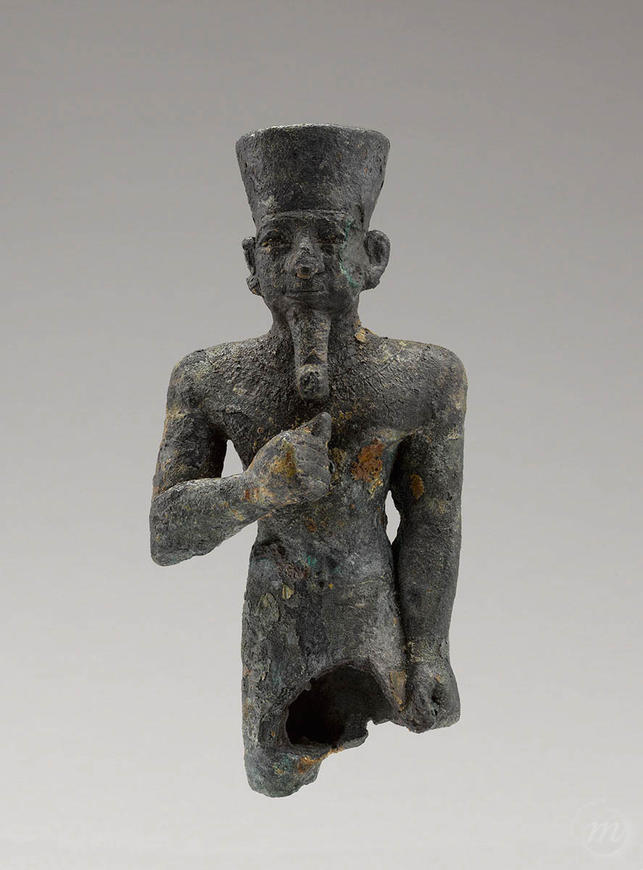Our research began in Egypt. During the 19th and early 20th centuries, excavations of Egyptian temples unearthed thousands of bronze objects. These were offerings made by worshippers to the gods. As time passed, they built up, forcing priests to bury them in pits to allow new ones to be left.
This small torso is part of a batch of small bronzes placed on deposit in Lille by the Louvre. However, due to its fragmentary state, it was quickly abandoned and put in storage for years.
But in 2000, a museum curator decided to restore the Egyptian bronzes and present them to the public again! So they were sent to the Research and Restoration Centre of the Museums of France, where each item received a proper health check, as befits the most seriously ill! The small bronzes passed through the hands of AGLAE (Grand Louvre Accelerator of Elementary Analysis), a highly sophisticated machine that can identify the constituent materials of objects using an ion beam.
The greenish appearance of the bust actually hides a bronze that was originally inky black, covered with gold on the loincloth, blue on the torso and red on the chest.
Plucking up all his courage, our curator wasn’t satisfied with a headless torso! So he set out in search of the missing part, heading for the Louvre's reserves! After hours of searching, a man's head appeared. The breaks at the neck seemed to match those on the Lille torso. Placing the two elements together confirmed his initial thoughts: they fitted together perfectly!
Thanks to the shape of the crown, the statuette regained its full identity: it’s the most important of the Egyptian gods, Amun.

Our research began in Egypt. During the 19th and early 20th centuries, excavations of Egyptian temples unearthed thousands of bronze objects. These were offerings made by worshippers to the gods. As time passed, they built up, forcing priests to bury them in pits to allow new ones to be left.
This small torso is part of a batch of small bronzes placed on deposit in Lille by the Louvre. However, due to its fragmentary state, it was quickly abandoned and put in storage for years.
But in 2000, a museum curator decided to restore the Egyptian bronzes and present them to the public again! So they were sent to the Research and Restoration Centre of the Museums of France, where each item received a proper health check, as befits the most seriously ill! The small bronzes passed through the hands of AGLAE (Grand Louvre Accelerator of Elementary Analysis), a highly sophisticated machine that can identify the constituent materials of objects using an ion beam.
The greenish appearance of the bust actually hides a bronze that was originally inky black, covered with gold on the loincloth, blue on the torso and red on the chest.
Plucking up all his courage, our curator wasn’t satisfied with a headless torso! So he set out in search of the missing part, heading for the Louvre's reserves! After hours of searching, a man's head appeared. The breaks at the neck seemed to match those on the Lille torso. Placing the two elements together confirmed his initial thoughts: they fitted together perfectly!
Thanks to the shape of the crown, the statuette regained its full identity: it’s the most important of the Egyptian gods, Amun.